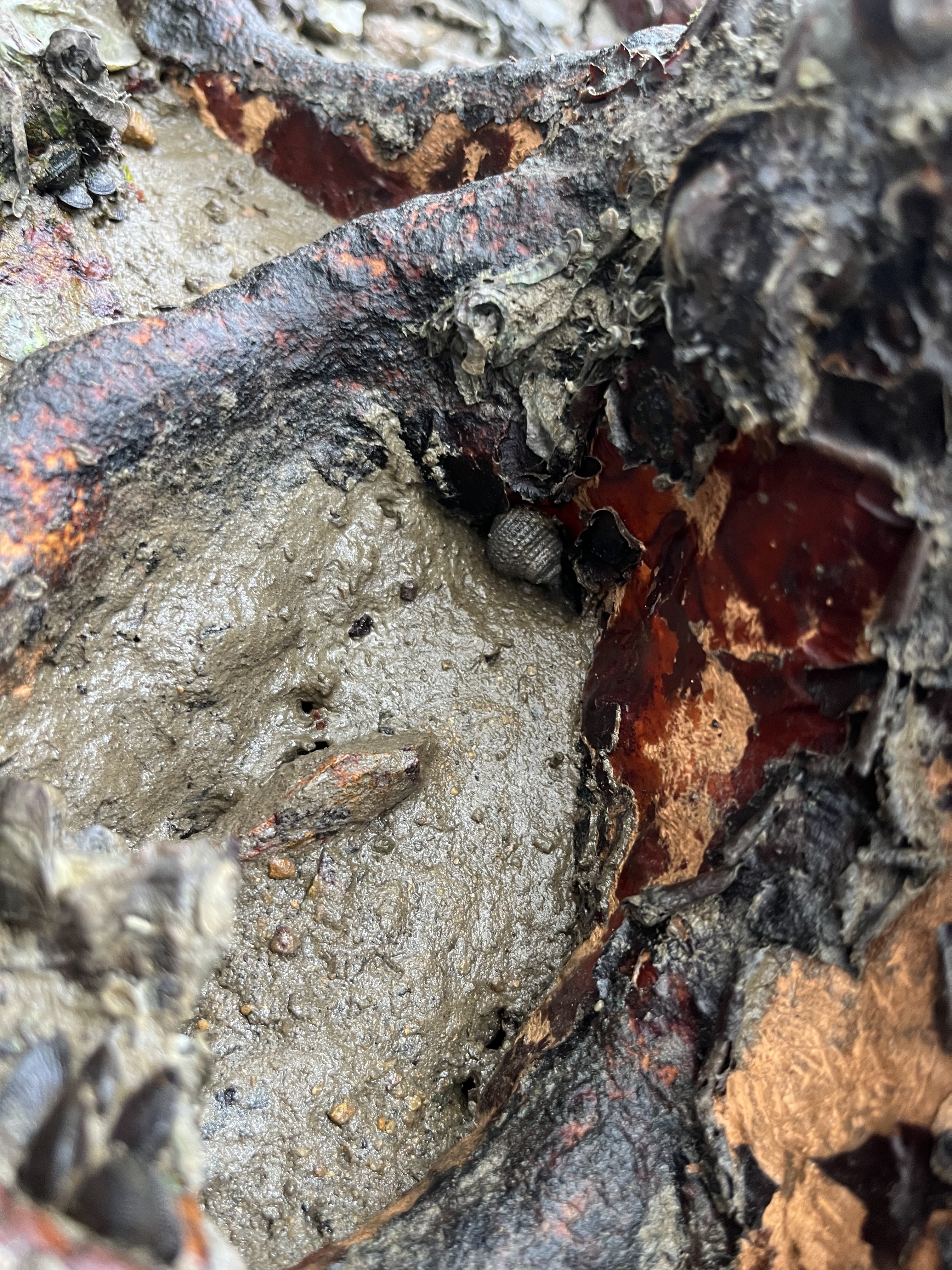Lai Chi Wo Nature TrailBehind the Hakka Village is the Fung Shui Wood. It is believed that the woods can bring good fortune and the village will be under its protection. Therefore, the woods are well-protected and preserved by the villagers.
The trail starts behind the village
The dominating strangler tree
Century-old Autumn Maple
This hollow Autumn Maple (Bischofia javanica) standing 16 meters tall and more than 1.5 meters in diameter, has been growing for more than a century. The cavities are likely to have been caused by cell infection in the trunk center. As the trunk grew in size over time, the cavities also grew and thus the whole trunk become hollow.
The giant Champhor
This is a native woody climbing species growing side by side with seaside mangroves.
It takes hundreds of years to grow from thin vines to stems measuring 20-30 cm in diameter. The Derris twines and coils in the ancient Coastal Heritiera forest.
Mangroves and seagrass bed
Most mangrove is located along shoreline. Organic matters are accumulated through sedimentation with tidal action. Besides, mangroves have high productivity that the detritus from the plant provides a huge amount of food for marine life and are important feeding grounds and breeding sites for a massive variety of coastal species.However, it is a harsh environment with muddy ground, high salinity and low dissolved oxygen level in the soil. To overcome the rigors, many animal and plant species found in the mangroves have evolved adaptive features.
Of the 5 known seagrass species in Hong Kong, Zostera japonica(矮大葉藻) can be found in the mudflat in front of the mangrove stand.
Mangroves
Mangrove species
There are 8 local true mangrove species in Hong Kong, including Excoecaria agallocha(海漆), Lumnitzera racemosa(欖李), Avicennia marina(白骨壤), Acrostichum aureum(鹵蕨),Kandelia obovata(秋茄樹), Heritiera littoralis(銀葉樹), Bruguiera gymnorhiza(木欖) and Aegiceras corniculatum(蠟燭果).
Among the 8 species, Kandelia obovata(秋茄樹) is the most commonly found species.
Bruguiera gymnorhiza(木欖), also known as Many-Petaled Mangrove, reproduces by vivipary. The plant tissue is rich in tannin and tints the plant red. It can be easily distinguished from other mangrove species by the red calyx of its flowers.
Waxy leaves
Salt-secreting
To adapt the unstable substratum and anaerobic conditions, many mangrove species have developed shallow but wide roots to support the weight of the mangrove itself. Aerial roots developed from the trunk are growing downwards to increase the efficiency in gas exchange, while providing support for the mangrove. Such characteristics can be found in Kandelia obovata(秋茄樹).
The Bivalvia family including scallops, clams, mussels and oysters, are aquatic soft-body animals that have two-part symmetrical shells. Most of them are filter feeders that extract organic matter from the sea in which they live. The tidal action brings food from the sea to the shore, so these animals can usually be found in places where water flow occurs. In the mangrove, most of them choose to attach to the tree, waiting for tidal actions to feed, and have developed the ability to leave water for hours.
A gastropod crawling on the muddy ground
Gastropods are often referred to snails and slugs. They are always found crawling slowly, or adhering firmly, on the stems and foliage of mangroves where they feed on plant cells, fungi and microalgae from the surfaces. Moving traces can be easily found on the muddy surface.
Unlike Bivalvia, many Gastropods have teeth to extract food, thus symmetrical tooth marks will be left on a surface.

Crabs
Crabs can be found in a wide range of habitats from freshwater to seawater and brackish water, and from terrestrial to aquatic.
As a decomposer, they consume mangrove litter such as rotten mangrove leaves, seeds and branches to form a link in the energy flow within the area. With their burrow-digging behavior, they also help create air circulation around the roots. Crabs in the mangroves are tolerant to the unstably changing salinity and are semi-terrestrial which is able to live in both water and land. The hairy mesh on their mouthparts holds a layer of water firm, allowing them to leave water for a few hours without suffocating by circulating the water to the mesh for oxygenation and back to their gills for air exchange.
















留言
發佈留言